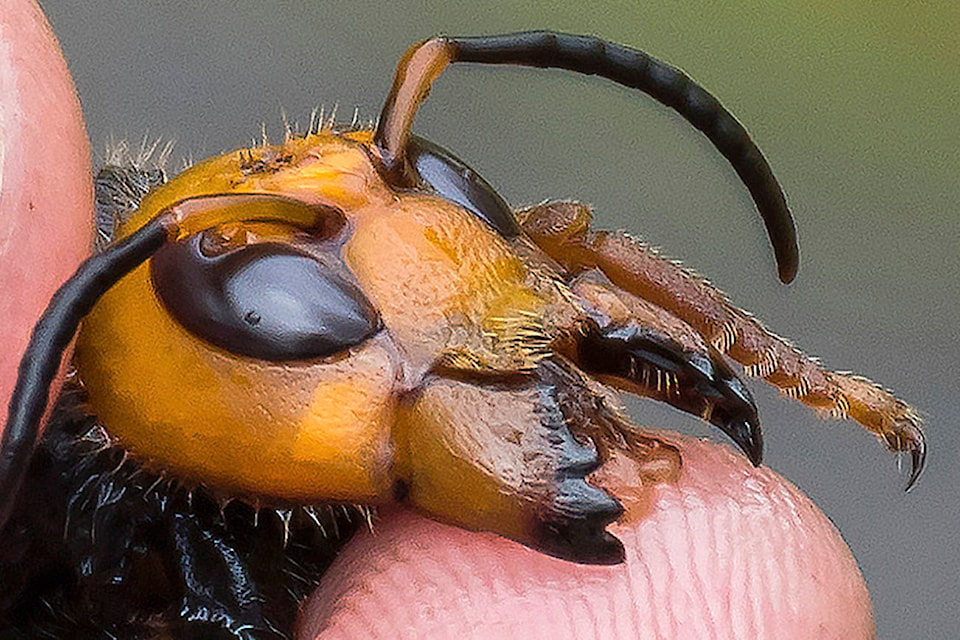One of the extra-large invasive insects dubbed “murder hornets,” has been found in Langley, according to the province’s top bee official.
Paul van Westendorp, the B.C. apiarist, said that a specimen of Asian giant hornet was found in Langley Township, around 208th Street and 32nd Avenue.
This is the farthest east that the hornets have been found in B.C. The specimen will be autopsied to determine whether it’s a worker, drone, or queen, and its tissue will be preserved for DNA sequencing.
Previously, van Westendorp said, the giant hornets have been found around White Rock and along Zero Avenue, since the first sightings in 2019. The hornet was first spotted last year in Washington State.
“The Langley find is an indication that this insect has spread farther than anticipated,” he said.
“It should be mentioned that we anticipate more reports in the next few months as the development of larger nest populations will make the presence of AGH [Asian giant hornet] more apparent,” he said. “This should not be interpreted as if the country side is going to be overrun.”
As an “apex predator” of the insect world, numbers of Asian giant hornets tend to be low.
READ MORE:
Individual hornets are not considered a threat to humans, pets, or livestock, but they can be a threat when their nests are disturbed.
The hornets have 1/4 inch stinger and can deliver a painful sting.
But the main cause for concerns is that hornets prey on honeybees. There are fears they could attack local hives, which pollinate crops and wild plants.
“The impact on honeybee colonies remains unknown at this time,” van Westendorp said. “However, beekeepers are highly innovative are likely to develop screens or other physical barriers that will eliminate or at least reduce the impact of AGH.”
“We urge you to be vigilant,” van Westendorp said in a letter to Fraser Valley beekeepers, asking them to report any unusual activities and sightings to government websites for tracking and reporting invasive species, either or .
The typical hornet is between 1.4 and 1.6 inches (3.5 to four centimeters) while queens are up to two inches (five centimetres).



